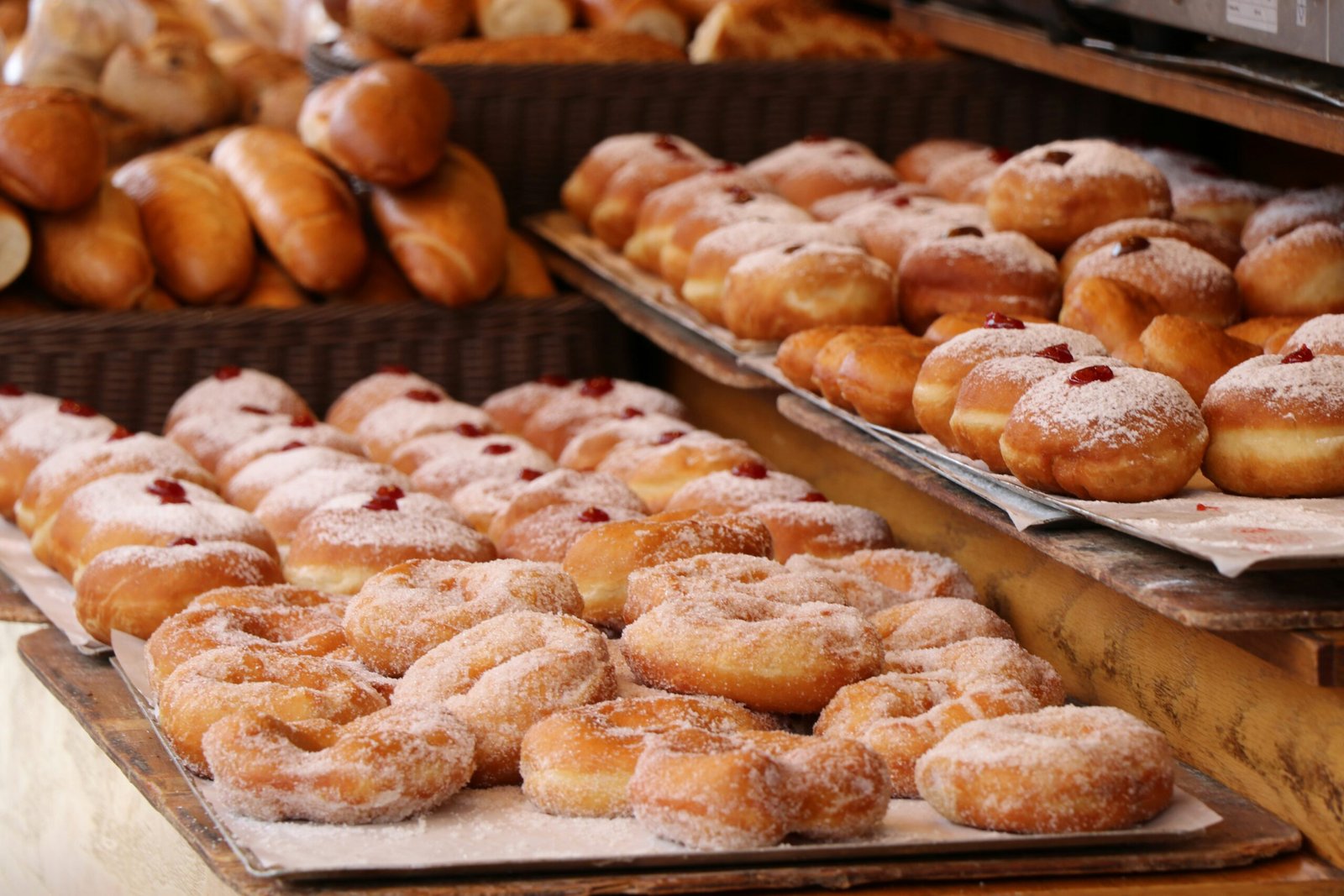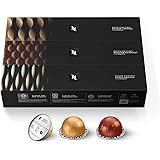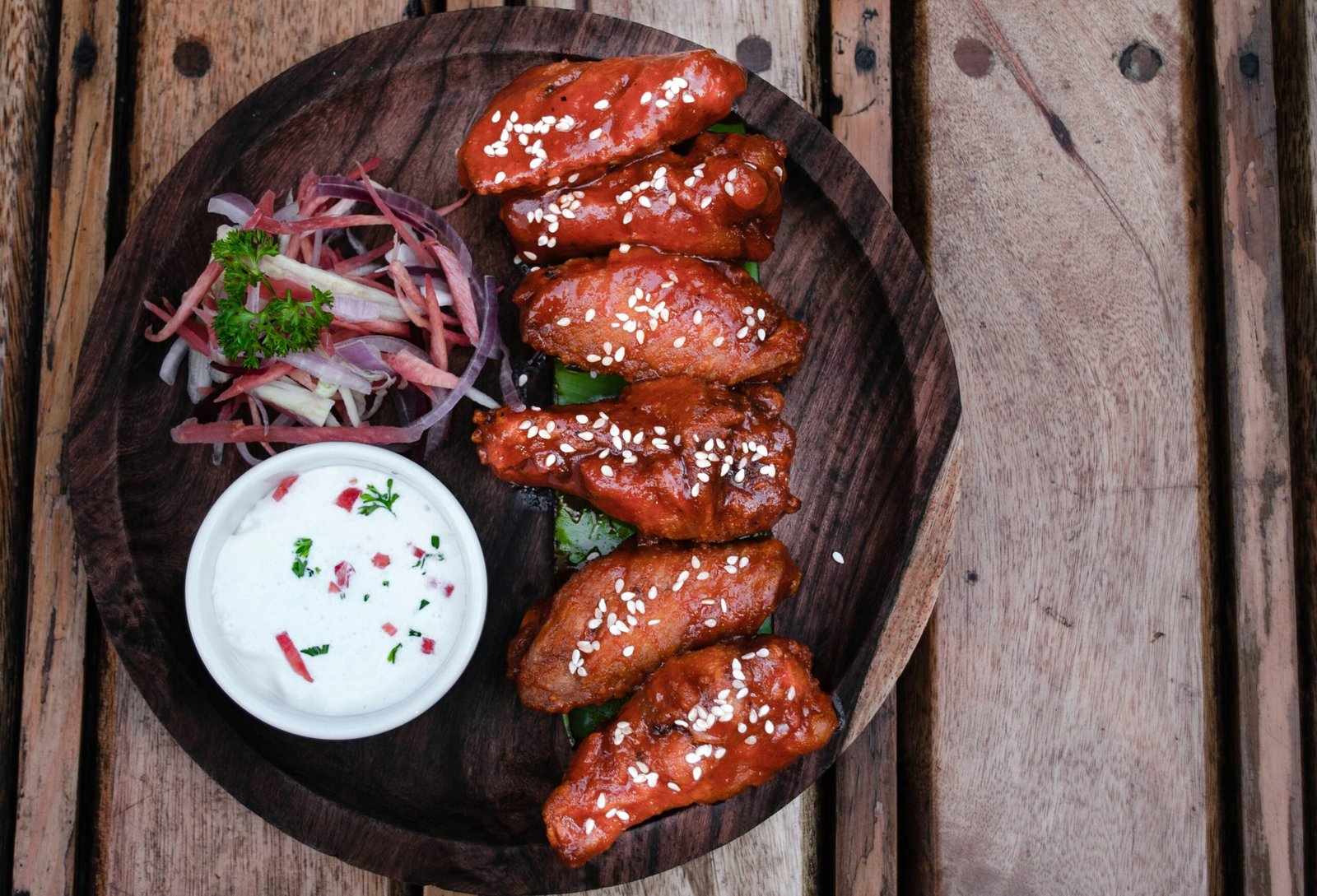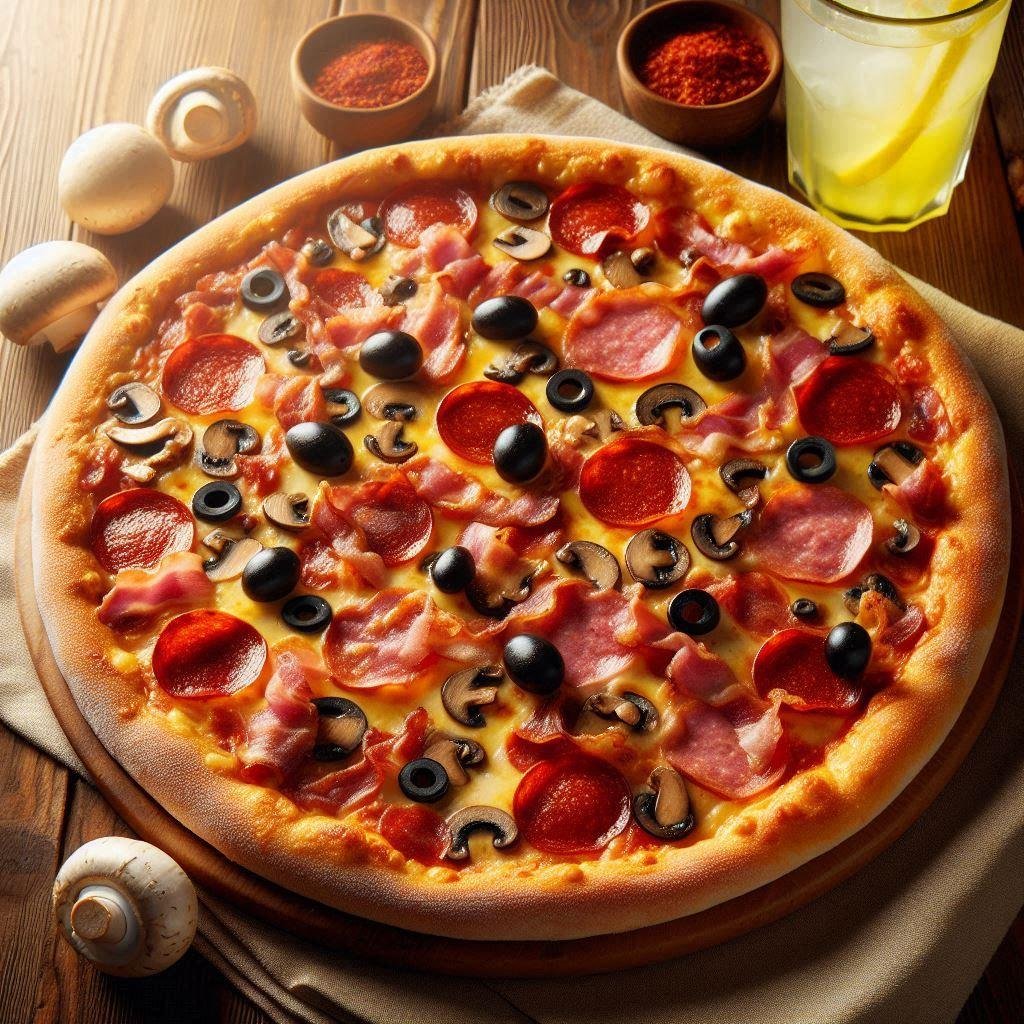Introduction to Hanukkah Donuts
Hanukkah donuts, widely recognized as sufganiyot, are a beloved culinary tradition during the Festival of Lights, celebrated by Jewish communities around the world. These round, jelly-filled pastries, often dusted with powdered sugar, not only symbolize the joy of the holiday but also reflect deep historical roots intertwined with Jewish culture. The origins of sufganiyot can be traced back to ancient times, where fried foods were consumed to commemorate the miracle of the oil that lasted eight days in the rededicated Holy Temple.
The significance of sufganiyot during Hanukkah extends beyond their delicious flavor. Traditionally, these donuts serve as a reminder of the miracles associated with the holiday, embodying the principles of hope and resilience. Over the years, the fillings of sufganiyot have evolved, initially consisting of various jams and jellies, but now often featuring contemporary flavors such as chocolate, vanilla cream, or even seasonal ingredients like pumpkin spice. This evolution highlights not only the creativity of bakers but also the adaptability of traditions within Jewish cuisine.
<phistorically, 20th=”” a=”” adapt=”” and=”” are=”” as=”” attributed=”” between=”” blend=”” bridge=”” can=”” celebration=”” celebrations=”” century.=”” context=”” cultural=”” delicious=”” dessert;=”” eastern=”” emergence=”” encouraging=”” european=”” fried=”” generations=”” hanukkah=”” heritage,=”” homage=”” how=”” identity.
Essential Ingredients for Hanukkah Donuts
To create delicious Hanukkah donuts, also known as sufganiyot, it is essential to gather a selection of ingredients that contribute to their rich flavor and delightful texture. The primary ingredient is all-purpose flour, which serves as the base. Typically, around 4 cups of flour are needed. This key ingredient provides the necessary structure for the donuts.
Next, you will require ½ cup of granulated sugar, which not only sweetens the donuts but also helps to achieve a light and fluffy consistency during frying. Additionally, 1 tablespoon of instant yeast is critical for leavening the dough, ensuring that the donuts rise properly. Combining the dry ingredients will enhance the overall texture.
In terms of wet ingredients, 2 large eggs are vital, adding richness and moisture to the dough. Moreover, you will need 1 cup of whole milk, warmed, to help activate the yeast and create a soft dough. For flavor, 1 teaspoon of vanilla extract is recommended, giving the donuts a subtle sweetness that complements their fillings.
When it comes to frying, 4 to 5 cups of vegetable oil or canola oil should be prepared for deep frying. This quantity is necessary to ensure the donuts are submerged properly during cooking, resulting in a crisp exterior while maintaining a soft interior.
For the fillings, traditional options include fruit jams, such as raspberry or strawberry, generally requiring 1 to 1.5 cups, depending on how generously you wish to fill each donut. Alternatively, pastry cream can be used, providing a delightful custard-like texture. Finally, powdered sugar is needed for dusting the finished donuts, adding an appealing touch. With these essential ingredients, you are well on your way to making an unforgettable batch of Hanukkah donuts.
Step-by-Step Instructions for Making Hanukkah Donuts
Creating Hanukkah donuts, also known as sufganiyot, can be a delightful experience, especially with the right guidance. Here’s a simple step-by-step process to help you prepare these delicious treats. Begin by gathering your ingredients, which include all-purpose flour, sugar, yeast, salt, milk, eggs, and butter. Make sure you also have some filling on hand, such as jam or custard, as well as oil for frying.
Start by activating the yeast. In a bowl, combine warm milk and sugar, then sprinkle the yeast over the mixture. Allow it to sit for about 5-10 minutes until it becomes frothy. In a separate bowl, mix the flour and salt. Create a well in the center and add the activated yeast mixture, eggs, and melted butter. Mix until a dough forms, then knead it on a floured surface for about 8-10 minutes until you achieve a smooth texture.
Next, place the dough in a greased bowl, cover it with a clean cloth, and let it rise in a warm place for about an hour or until it has doubled in size. Once the dough has risen, punch it down and roll it out to about 1/2 inch thick. Use a round cutter to cut circles from the dough. Reroll any scraps to cut additional donuts. Again, cover the cut donuts and let them rise for another 30 minutes.
During the final rise, you can prepare for frying. Heat oil in a deep pot to about 350°F (175°C). Once the donuts have risen, carefully drop them into the hot oil, frying a few at a time to avoid overcrowding. Fry for about 2-3 minutes on each side until they are golden brown. Remove them with a slotted spoon and set them on paper towels to drain excess oil. Once cooled, fill your donuts with your desired fillings and dust them with powdered sugar to finish.
Following these instructions closely will ensure that your Hanukkah donuts turn out perfect—crispy on the outside and soft on the inside, ready to be enjoyed by family and friends during this festive season.
Filling Your Donuts: Options and Ideas
Hanukkah donuts, known as sufganiyot, are a delightful staple during the Festival of Lights, celebrated for their sweet and oftentimes innovative fillings. The traditional jam filling, particularly raspberry or strawberry, is a classic choice that many people favor. This fruity filling not only adds a burst of flavor but also balances the sweetness of the fried dough. For those who prefer a more decadent treat, chocolate spread is an excellent alternative. Hazelnut chocolate spreads, like Nutella, can elevate the donut experience by providing a rich, creamy center that complements the lightness of the pastry.
Another popular filling is pastry cream, which can be flavored with vanilla, lemon, or even coffee, offering a luxurious texture and taste. The creamy filling pairs well with the lightness of the donut and allows for a more sophisticated indulgence. Additionally, for those who enjoy a caffeinated twist, coffee-flavored cream can be an exhilarating unexpected surprise. Another option worth exploring is fruit curd, such as lemon or passionfruit, which provides a tart contrast to the sweetness of the dough, creating a balanced flavor profile.
For a modern and unconventional twist, consider incorporating flavored whipped cream, or even ice cream, as a filling—this adds a novel element that can impress guests and offer a refreshing change. Furthermore, toppings such as powdered sugar, chocolate drizzle, or sprinkles can enhance not only the aesthetic appeal but also the overall flavor experience of these festive donuts. By personalizing your fillings and toppings, you can create unique sufganiyot that reflect your taste preferences and make your Hanukkah celebrations even more memorable.
Tips for Perfectly Fried Donuts
Frying donuts, particularly during Hanukkah, requires attention to detail to achieve the ideal texture and flavor. One of the most crucial aspects is managing the oil temperature. It is recommended to maintain the oil at a consistent temperature between 350°F and 375°F (175°C to 190°C). Using a deep-frying thermometer can help monitor this, ensuring that the donuts cook evenly without absorbing excessive oil. If the temperature is too low, the donuts may become greasy; if too high, they risk burning on the outside while remaining uncooked inside.
An effective method for frying donuts involves using a heavy-bottomed pot or a deep fryer, which can help distribute heat evenly and maintain temperature during cooking. When dropping the dough into the oil, ensure that the pieces are not overcrowded, as this can cause the temperature to drop suddenly, leading to soggy treats. Fry in small batches, allowing ample space for the donuts to swell and cook properly.
Once the donuts are added to the hot oil, it is essential to let them fry undisturbed for a few minutes before flipping them. This technique ensures a golden-brown exterior. Halfway through cooking, gently poke or flip the donuts using a slotted spoon to encourage even frying. After removal from the oil, immediately place the donuts on a cooling rack or paper towels to drain excess oil, preventing them from becoming soggy.
Additionally, dusting the fried donuts with sugar or adding glaze while they are warm can enhance flavor while also creating a delightful texture. Remember that perfectly fried donuts are all about the right balance of time, temperature, and technique, so taking care in each step will yield the best results. With practice, anyone can master the art of frying delicious Hanukkah donuts that are crisp on the outside and fluffy on the inside.
Serving Suggestions for Hanukkah Donuts
When it comes to serving Hanukkah donuts, creativity can turn a simple treat into a delightful centerpiece for your holiday gatherings. One effective way to elevate your presentation is by using decorative serving platters that reflect the spirit of the festival. Consider incorporating traditional blue and white colors through your serving dishes or adding metallic accents to create a festive atmosphere. A tiered cake stand can also be an elegant choice, allowing guests to admire the assortment of donuts from different angles.
In addition to attractive presentation, garnishes can add an extra layer of flavor and visual appeal to your donuts. Dusting them with powdered sugar offers a classic touch, while a light drizzle of chocolate or caramel sauce can enhance their indulgence. Fresh fruits, such as berries or pomegranate seeds, not only provide a pop of color but also add a refreshing contrast to the rich flavors of fried donuts. Sprigs of mint or edible flowers can serve as stylish accents for serving platters, further enhancing the festive theme.
Pairing suggestions also play a crucial role in enhancing the enjoyment of Hanukkah donuts. Offering a selection of dipping sauces, such as fruit preserves, chocolate fondue, or even flavored curds, allows guests to personalize their experience. Complementing the sweetness of the donuts with a variety of beverages can create a well-rounded dessert table. Hot beverages like spiced cider or coffee can provide a warming balance to the sweetness, while sparkling drinks or non-alcoholic cocktails can add a festive touch without overshadowing the main attractions of the table. Thoughtful serving ideas can transform your Hanukkah donut experience into a memorable celebration that family and friends will cherish for years to come.
Toppings: Sugar, Spice, and Everything Nice
Donuts, especially those prepared for Hanukkah, are a celebratory treat that holds both cultural significance and undeniable deliciousness. The toppings used on these sweet fried creations play an essential role in enhancing their visual appeal and flavor profile. Among the most popular toppings, powdered sugar stands out as a classic choice. A light dusting of this fine sugar not only adds elegance to the donuts but also provides a gentle sweetness that complements the richer flavors inside.
Cinnamon is another beloved topping that can be used in various ways. Combining cinnamon and sugar creates a delightful mixture that can be rolled onto warm donuts, delivering a comforting spice that is particularly appealing during the festive season. Cinnamon adds warmth and complexity, giving a nod to traditional flavors that resonate with many during Hanukkah. For those seeking a touch of color and fun, colorful sprinkles can be added. Sprinkles introduce a playful aesthetic that appeals to children and adults alike, transforming the donuts into a festive treat that excites the senses.
Glazes provide yet another option for topping these delectable sweets. A simple glaze made from powdered sugar and water or milk can create a shiny, sweet coating that enhances both taste and appearance. The key to applying toppings effectively is to ensure that donuts are still warm when the toppings are added. This allows for better adherence and a more appealing finish. Care should be taken to not overdo the application; a few sprinkles or a careful dusting of powdered sugar can make all the difference between delicious and overwhelming. In essence, the toppings chosen for Hanukkah donuts not only elevate their taste but also contribute to the festive spirit, making each bite a delightful experience.
Common Mistakes to Avoid
When preparing Hanukkah donuts, also known as sufganiyot, home cooks may unintentionally encounter several pitfalls that can affect both the flavor and texture of these festive treats. Identifying and addressing these common mistakes will enhance your chances of creating perfectly fried doughnuts that honor the culinary traditions of Hanukkah.
One prevalent issue is improper dough consistency. The dough should be soft and slightly sticky, which can be achieved by carefully measuring ingredients and following the resting times in the recipe. If the dough is too dry, the donuts may become dense and chewy rather than light and airy. A helpful tip is to use a kitchen scale for precise measurements and ensure the yeast is fresh and active to help your donuts rise effectively.
Another mistake often made is overheating the oil during frying. The ideal frying temperature for sufganiyot is around 350°F to 375°F (175°C to 190°C). If the oil is too hot, the outside may cook rapidly while leaving the interior undercooked. To monitor the temperature accurately, consider using a candy thermometer, which allows you to adjust the heat as needed for optimal frying. Additionally, frying in small batches helps maintain temperature stability, ensuring each donut is cooked evenly.
Lastly, neglecting to allow the fried donuts to cool properly can hinder the absorption of fillings, such as jam or custard. As the donuts cool slightly, they become more receptive to absorbing flavors. Instead of filling them immediately after frying, let them cool for a minute or two. This simple step can elevate your donuts, ensuring they are both delicious and aesthetically appealing. By avoiding these common mistakes, you can boost your confidence in cooking and enjoy a successful Hanukkah celebration filled with delightful homemade donuts.
Gluten-Free and Alternative Ingredients
For those who follow a gluten-free diet or have dietary restrictions, making Hanukkah donuts can still be a delightful experience. Traditional recipes often call for all-purpose wheat flour, which can easily be substituted with gluten-free alternatives. One of the most popular gluten-free flours is almond flour, which provides a rich flavor and moist texture. Almond flour can be used alone or blended with coconut flour to achieve a balanced consistency. Another option is gluten-free all-purpose flour, which is specifically formulated to mimic the texture of wheat flour in baking.
In addition to flour substitutes, it is important to ensure that other ingredients in the recipe are also gluten-free. Many baking powder brands are gluten-free, but always check the label to confirm. Sugar and eggs, commonly used in donuts, are naturally gluten-free, so they can be used without concern. For sweetening without sugar, alternatives like maple syrup or agave nectar can be effective. Just be mindful of adjusting the liquid content in the dough if using these alternatives since they can add extra moisture.
If you are accommodating additional dietary restrictions, consider substituting dairy products as well. For instance, dairy-free alternatives such as almond milk or coconut milk can replace regular milk, and coconut oil or vegan butter can be used in place of traditional butter. These substitutions not only make the donuts accessible to a broader audience but also keep the focus on flavor and texture. By using gluten-free and alternative ingredients, everyone can enjoy the delightful tradition of Hanukkah donuts, enhancing inclusivity in festive celebrations.
History and Significance of Sufganiyot
Sufganiyot, the delectable donuts traditionally enjoyed during Hanukkah, hold a significant place in Jewish culture and history. Originating in the Jewish communities of Eastern Europe, these fried treats symbolize the miracle that occurred during the Maccabean revolt against the Seleucid Empire. The holiday of Hanukkah commemorates the rededication of the Second Temple in Jerusalem and the miracle of the oil that lasted eight days despite there being only enough for one. This miraculous event serves as a compelling backdrop for the consumption of sufganiyot during the festival.
The fried nature of sufganiyot is notably symbolic, as oil is a critical component of the Hanukkah story. The act of frying the donuts parallels the act of deep-frying, which is often associated with the miraculous oil that was used in the Temple’s menorah. Moreover, sufganiyot have transcended their humble origins, adapting to various cultural influences and ingredients across the globe. Today, they are filled with a variety of sweet fillings, such as jam, custard, and chocolate, catering to diverse palates and preferences.
In Jewish households during Hanukkah, the preparation and sharing of sufganiyot is a cherished tradition. Families come together to indulge in these treats, reinforcing the sense of community and heritage inherent in the holiday. Beyond the taste, these donuts embody themes of celebration, freedom, and the continuity of Jewish traditions. As the custom of making and enjoying sufganiyot spreads beyond Jewish communities, it serves as a reminder of the shared values of resilience and joy during the festival of lights.
Storage and Reheating Tips
To ensure that your delicious Hanukkah donuts maintain their flavor and texture after the initial frying, proper storage is essential. Begin by allowing the donuts to cool completely on a wire rack. Storing them while still warm may create condensation, leading to soggy pastries. Once cooled, you should store the donuts in an airtight container. Line the bottom of the container with parchment paper to absorb any excess moisture, which can help retain the crispness of the donuts.
If you anticipate enjoying the donuts over a period of several days, you may consider freezing them. To freeze, first wrap each donut individually in plastic wrap, ensuring that they are tightly sealed to prevent freezer burn. Place the wrapped donuts in a freezer-safe bag or container, and consume them within three months for the best quality. When you are ready to enjoy the frozen donuts, allow them to thaw overnight in the refrigerator or at room temperature for about an hour before reheating.
Reheating donuts can effectively reinstate their freshness. For optimal results, preheat your oven to 350°F (175°C). Arrange the donuts on a baking sheet lined with parchment paper, and warm them for approximately 5 to 7 minutes. This technique revives the donuts’ desirable texture while preserving their delightful flavor. If you are looking for a quicker method, use a microwave; however, be cautious with timing. Microwave each donut for about 10-15 seconds, checking frequently to avoid overheating, which may result in a chewy texture instead of a light one.
By following these storage and reheating guidelines, you can enjoy your Hanukkah donuts at their best, even after they have cooled and set aside. The key is maintaining the balance of flavor and texture, allowing you to savor these seasonal treats even days after they are made.
Pairing Drinks with Hanukkah Donuts
When enjoying the delightful sweetness of Hanukkah donuts, selecting the right beverage can greatly enhance the overall experience. The perfect drink pairing not only complements the flavors of the donuts but also elevates the festive mood surrounding this cherished tradition. There are various options to consider, ranging from traditional beverages to modern twists that can cater to diverse preferences.
To honor the cultural significance of Hanukkah, individuals may opt for traditional options such as hot chocolate or spiced cider. These warm beverages bring comfort and coziness that pairs beautifully with the sugary, rich flavors of the donuts. A classic hot chocolate made with quality cocoa and a hint of cinnamon can provide a delightful contrast to the sweet glaze of the donuts. Simultaneously, spiced cider, infused with cloves and orange, brings an aromatic quality that can enhance the sensory experience of indulging in these festive treats.
On the other hand, modern pairings can include a variety of coffees or teas. A robust cup of dark roast coffee can serve to balance the sweetness, offering a caffeine boost that many enjoy during the Hanukkah celebrations. Alternatively, a herbal tea, such as chamomile or mint, provides a lighter and refreshing option that pleasantly complements the rich textures of the donuts. For a more adult-oriented pairing, sparkling wines or sweet dessert wines can accentuate the flavors, making them an excellent accompaniment for celebrations with family and friends.
Ultimately, the key is to choose beverages that harmonize with the sweet flavor profiles of the Hanukkah donuts while reflecting personal preferences and cultural traditions. By thoughtfully considering drink options, one can enhance the entire culinary experience, making each bite and sip a memorable part of the Hanukkah festivities.
Engaging Your Family in the Cooking Process
Cooking together as a family can transform the preparation of delicious Hanukkah donuts into a memorable and enjoyable experience. By involving all family members in the cooking process, you not only create a delightful atmosphere but also foster teamwork and bonding. To begin, assign roles based on each person’s skills and interests. For example, younger children can assist with mixing ingredients or decorating the donuts, while older children and adults can take on more complex tasks such as frying and measuring. This division of labor ensures everyone feels included and valued.
To enhance the experience further, consider putting on festive music that everyone enjoys. A family playlist can set a joyful tone, making the entire process feel like a celebration. Encourage storytelling and sharing of past experiences related to Hanukkah traditions while cooking, which can deepen familial connections and provide an opportunity to impart cultural values to younger generations. Additionally, setting up a designated workspace where each member has their equipment can enhance focus and streamline the cooking process.
Another approach to engaging your family is to invite them to customize their donuts. Providing a variety of fillings and toppings, such as chocolate, raspberry, or vanilla frosting, allows each person to express their creativity. This not only makes the cooking process interactive but also adds an element of surprise as family members reveal their unique creations at the end. Lastly, create a tradition by documenting the cooking process with photos or videos, capturing the fun times spent together. These memories can be cherished and revisited in future years, solidifying the significance of your Hanukkah donut-making tradition.
Creative Variations on Hanukkah Donuts
Hanukkah donuts, known as sufganiyot, traditionally feature a delightful combination of sweet dough and jam filling, often topped with powdered sugar. However, the holiday is an invitation to innovate, allowing culinary enthusiasts to explore creative variations that can help personalize this cherished treat. By experimenting with ingredients, flavors, and presentations, one can elevate the sufganiyot experience into a delectable and memorable affair.
Seasonal flavors offer a fantastic starting point for variations on the classic donut. Incorporating unique ingredients such as pumpkin spice during the fall, peppermint for winter festivities, or even citrus zest for a refreshing twist can add new dynamics to traditional recipes. For example, a gingerbread-spiced dough paired with a cream cheese frosting can create a holiday-inspired donut that is sure to impress friends and family. The use of various spices can bring a warm, festive feel to each bite, making them a delightful addition to any holiday celebration.
Unique fillings are another way to infuse creativity into these sweet treats. While jelly and custard remain popular choices, one may also consider unconventional fillings such as Nutella, pastry cream, or even seasonal fruit compotes. For instance, a raspberry-chocolate filling can deliver an unexpected burst of flavor, while flavors like salted caramel can provide an indulgent twist. These options not only enhance the taste but also cater to diverse palates, making the donuts more appealing to a wider audience.
Additionally, alternative frying techniques, such as baking or air frying, offer healthier adaptations to the traditional frying method. Although the distinct taste of deep-fried donuts is hard to replicate, these methods can yield lighter versions without sacrificing flavor. Incorporating whole wheat flour or almond flour can further enrich the nutritional content, allowing for a more health-conscious treat while maintaining the essence of Hanukkah donuts. Overall, exploring these creative variations offers an exciting opportunity to celebrate the season in a uniquely personal way.
Reader Experiences: Share Your Donut Journey
As we embark on the delightful journey of preparing Hanukkah donuts, often referred to as “sufganiyot,” we invite you to become an active participant in our community. The process of creating these delectable treats is not just about the end result but also about the experiences that come along the way. Your unique stories and feedback can inspire others who are looking to embrace this cherished tradition. After trying out the recipe, we encourage you to share your experiences, whether they are delightful triumphs or humorous mishaps.
In our fast-paced world, taking the time to cook and celebrate can create lasting memories. We believe that documentation of these moments plays a crucial role in building connections, as it encourages fellow home cooks to join in the culinary adventure. Consider capturing your kitchen experience by snapping photos of your sufganiyot and the family gatherings that accompany them. Share these images on social media platforms using our designated hashtag to foster a sense of belonging and recognition among fellow donut enthusiasts.
Moreover, we invite you to provide feedback on the recipe. Your insights will not only help us improve future versions but will also create a valuable resource for others trying to master the art of making Hanukkah donuts. Whether through tips on variations or suggestions for enhancing the flavor profile, your input is invaluable. Engaging with our community in this way helps us all learn from one another, fostering a sense of camaraderie during this festive season.
Remember, the joy of preparing Hanukkah donuts is amplified when shared. Let your experiences and creativity flow and contribute to our growing community dedicated to celebrating this sweet tradition. Happy frying!
Conclusion: Celebrate with Sweet Treats
As the Festival of Lights approaches, the joy of making and sharing delicious Hanukkah donuts adds a special touch to the celebrations. These delightful fried pastries, known as sufganiyot, serve not just as desserts but as symbols of tradition and togetherness among family and friends. The act of preparing these sweet treats can enhance the festive spirit, allowing for moments of connection and shared joy in the kitchen.
Embracing the captivating aroma and taste of freshly fried donuts can be a delightful experience. Each bite, with its fluffy dough and rich filling, evokes fond memories and encourages the formation of new traditions. Using recipes passed down through generations or even experimenting with one’s own flavors offers a creative avenue to personalize celebrations. Whether filled with classic jelly or luscious chocolate, each donut crafted during Hanukkah adds a unique touch to the festivities.
Encouraging readers to try their hand at this delightful recipe not only fosters engagement but also invites them to partake in this cherished tradition. As the candles burn brightly, the act of sharing these delectable donuts can bring forth a spirit of generosity and community. In the hustle and bustle of the holiday season, the simple joys of making and sharing sweet treats can turn an ordinary gathering into a memorable occasion.
Ultimately, as families come together to celebrate Hanukkah, the incorporation of these delicious donuts into their festivities will undoubtedly enhance the overall experience. So, gather your loved ones in the kitchen, and embark on this sweet journey of making Hanukkah donuts—creating delicious memories that will linger long after the holiday has passed.
References and Further Reading
For those interested in deepening their understanding of Hanukkah donuts and Jewish culinary traditions, a variety of resources are available. One notable reference is the book “Jewish Cooking: A Food Lover’s Treasury” by Joan Nathan, which offers an extensive exploration of Jewish recipes, including traditional fried pastries enjoyed during Hanukkah. Consider also “The Book of Jewish Food” by Claudia Roden, a comprehensive guide that provides insight into Jewish cuisine from around the world, featuring recipes and historical anecdotes that illustrate the significance of these foods during celebrations such as Hanukkah.
Online, there are several articles that delve into the history and cultural relevance of sufganiyot, the traditional jelly-filled donuts served during the festival of lights. Websites such as My Jewish Learning provide detailed accounts of Hanukkah traditions, alongside recipes that households can recreate. Additionally, the Jewish Virtual Library offers robust educational content that highlights not only the culinary aspects but also the broader cultural significance of such foods within the Jewish community.
For a more visual experience, YouTube hosts a variety of cooking channels that guide viewers through the process of making delicious Hanukkah donuts. Channels such as “Chef Amy’s Kitchen” showcase step-by-step tutorials, making it easy for anyone to replicate this festive treat at home. Furthermore, exploring culinary blogs like “Tori Avey” provides readers with anecdotes, tips, and detailed recipes designed particularly for Hanukkah celebrations.
These resources serve as excellent starting points for anyone keen on exploring the rich history and delectable recipes surrounding Hanukkah donuts, ensuring that this sweet tradition continues to be a cherished part of Jewish holiday celebrations.














